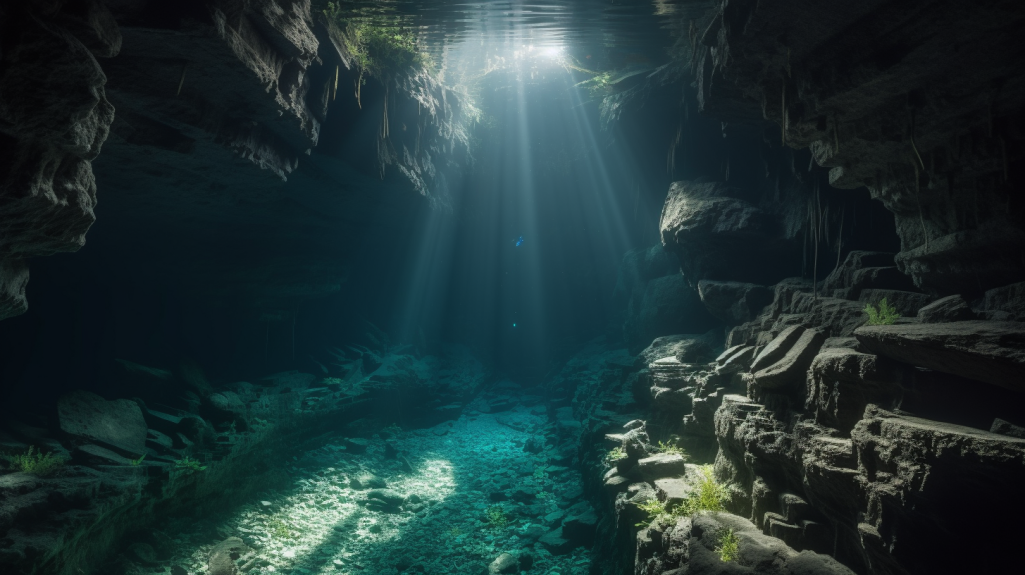The world beneath the surface of the water is a mysterious and captivating realm. While most people are familiar with the beauty of coral reefs and the majesty of marine life, there is another hidden wonder that lies beneath the waves – underwater caves. These submerged labyrinths, often concealed from the naked eye, are portals to a secret world waiting to be explored. In this article, we will dive deep into the enigmatic universe of underwater caves, exploring the allure, challenges, and the sheer thrill of venturing into the unknown.
The Allure of Underwater Caves:
Underwater caves are natural formations that have been carved out by the relentless force of water over thousands of years. They are found in oceans, seas, and even in some freshwater bodies, offering a unique and mysterious environment for divers to explore. These caves are adorned with stunning geological formations, including stalactites and stalagmites, which have formed over centuries, creating a mesmerizing and otherworldly atmosphere.
One of the most appealing aspects of underwater caves is the sense of discovery they offer. Unlike the well-explored reefs and popular dive sites, underwater caves often remain uncharted territory, waiting for adventurous divers to unravel their secrets. The thrill of being one of the first to explore a hidden cave system is a driving force for many divers, drawing them into the depths in search of new experiences and uncharted wonders.
Challenges of Cave Diving:
While the allure of underwater caves is undeniable, cave diving is not for the faint of heart. It presents a unique set of challenges and risks that require specialized training, equipment, and skills. The confined spaces, limited visibility, and potential for disorientation make cave diving one of the most technically demanding forms of scuba diving.
One of the primary challenges of cave diving is maintaining a clear sense of direction. Unlike open water diving, where the surface is always visible above, cave divers navigate through twisting passages and chambers, often with no direct line of sight to the exit. Proper training in cave diving techniques, including the use of guidelines and reels, is essential to prevent getting lost in the labyrinthine darkness.
Limited visibility is another significant challenge in cave diving. Suspended silt and debris can quickly reduce visibility to zero, making it challenging to see even a few inches in front of the diver’s mask. Divers must rely on their training and experience to navigate safely in these conditions, using touch and spatial awareness to avoid disturbing the silt and compromising visibility further.
The Thrill of Exploration:
Despite the challenges, the thrill of exploring underwater caves is unparalleled. Cave divers often describe the experience as a mix of excitement, awe, and tranquility. The sense of wonder that comes from discovering hidden chambers adorned with delicate formations is a reward in itself. The silence of the underwater world, broken only by the sound of bubbles escaping the diver’s regulator, adds to the surreal and magical ambiance of cave diving.
Exploring underwater caves also provides valuable insights into the Earth’s geological history and the processes that shape our planet. Studying the formations within caves can offer clues about ancient sea levels, geological shifts, and the diverse marine life that inhabited these environments throughout history. Cave systems are also vital for scientists studying underwater ecosystems, as they can harbor unique species adapted to the challenging conditions of darkness and limited resources.
Preserving the Underwater Wonderland:
Preserving the delicate balance of underwater cave systems is crucial to ensuring future generations can continue to explore and appreciate these natural wonders. Cave divers, environmentalists, and conservationists work together to raise awareness about the importance of responsible diving practices and the preservation of underwater ecosystems.
Proper training and education are fundamental to ensuring that divers understand the fragility of cave environments and the potential impact of human activities. Cave conservation initiatives focus on minimizing disturbances, avoiding contact with delicate formations, and promoting sustainable diving practices to protect these fragile ecosystems.
In conclusion, underwater caves represent a world of mystery, adventure, and scientific discovery. While they pose unique challenges to divers, the rewards of exploring these hidden wonders are immeasurable. As more people become aware of the importance of cave conservation and responsible diving practices, the secret world of underwater caves can continue to captivate the imagination of adventurers and researchers alike, preserving its beauty for generations to come. So, gear up, get trained, and prepare to embark on a journey into the heart of the Earth – where the surface meets the secrets hidden beneath. Happy diving!

